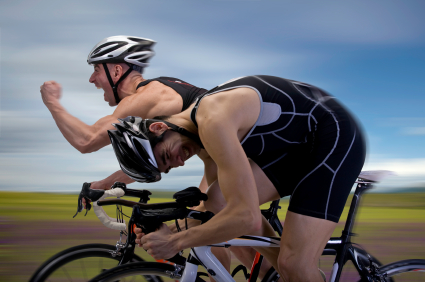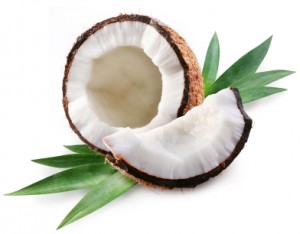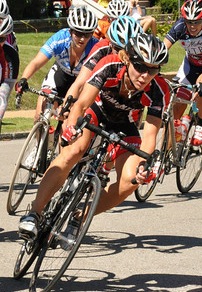It’s really hot outside!
And for us, here in the Midwest, those high temperatures come with lots of humidity too.
Humidity is not your friend.
For those of us who continue to exercise and exert ourselves through the heat wave, keeping a few important things in mind will go a long way to preventing dehydration and heat injury.
Ideally, on hot day, our body and our muscles generate heat and it sends the heated blood to the surface of the skin to cool off.
We sweat, the sweat evaporates, the skin temperature goes down, the cooled blood circulates, and it cools you off.
Body heat is raised by the temperature outside, humidity, and the intensity of exercise—the more intense the exercise, the more heat.
The problem is humidity.
You actually sweat more when it is humid, and the sweat does very little to cool you.
Excessive sweating drains you body of important electrolytes and fluids and dehydration occurs.
When this happens, athletic performance drops drastically (it’s your body’s way of trying to protect itself), and heat injury becomes a very real possibility.
Deaths have actually occurred from dehydration and overheating when the outside temperature was less than 75 degrees F (24 degrees C), because the humidity was above 95%.
Remember too, dehydration is cumulative. So if you go out and have a hard workout one day, come home, and don’t get enough fluids and electrolytes, the next time you will dehydrate even more quickly and it will be much worse.
Heat-related illnesses — heat exhaustion or heat stroke — are dangerous and can be deadly. And the young and elderly have an even harder time adapting to heat.
There are three stages to heat illness; heat cramps, heat exhaustion, and heat stroke.
Heat cramps come from muscle spasms in the arms, legs, or abdomen. These are usually the first sign, and come from a combination of dehydration, and a loss of salt and electrolytes.
Heat exhaustion includes weakness, headache, dizziness, foggy mental state, low blood pressure, elevated heart rate, and increase in body temperature as high as 104 degrees F (40 degrees C).
Heatstroke becomes a life-threatening condition and its symptoms are severe dehydration, a high body temperature, and a shutdown of the cooling mechanisms.
The athlete or individual may become delirious or comatose, and many victims actually stop sweating when the body is depleted of fluids. Body temperature can go up to 105°F (40.6°C), and as high as 110°F (43°C).
At these high temperatures, damage to the brain, heart, lungs, kidneys and other sensitive organs may occur. Sometimes despite the best medical care, at this point death is the end result.
How do you know when it’s hot and humid enough to take notice?
I use the ‘Rule of 140’. When the sum of the current temperature plus the humidity is over 140, take precautions.
How can we help to prevent heat and dehydration issues?
Adapt to the Heat—The human body acclimates to heat so that it can more easily adapt to higher temperatures and humidity. This adaptation takes about 10 days of exercise or activity in the heat and humidity–and only if you are well hydrated.
Obviously, you want be sure to dress lightly. And use clothing that allows for air circulation and helps sweat evaporate.
Many medications will actually speed up dehydration and interfere with sweating.
Antihistamines are meant to dry you out and will speed up the dehydration process drastically. So beware of cold/sinus medications when it is hot outside!
Blood pressure medications decrease sweating as well. And, so does alcohol and caffeine, because they act as diuretics.
Be sure to drink plenty of fluids — before, during and after!
Hydrate before any athletic event or any activity where you know you will be spending long hours in the heat and humidity.
How do you know if you are drinking enough? A good sign of adequate hydration is the output of large volumes of clear, pale yellow, dilute urine.
Many people underestimate the amount of fluid lost during activity outside. A good way to check this is to weigh yourself before and after exercise.
It’s difficult to remain hydrated in heat because you can lose twice as much sweat as you can ingest in fluids during an activity.
The most fluid the body can absorb during exercise is about 800ml per hour (27 fluid ounces/hr).
However, the rate of fluid lost through sweating can be as high as 1.5 – 2 liters (or 1500 to 2000ml) per hour (50 – 68 fluid ounces per hour).
Ok, how to replace those fluids? A sweet sports drink? NO.
Generally, though, for less intense activity that lasts under an hour, water is best.
For longer, more intense activity, you will need to replace some electrolytes (primarily sodium and potassium) and carbohydrates. But sports drinks like Gatorade usually contain too much sugar, citric acid (which can actually eat into your tooth enamel) and other junk in them.
My favorite electrolyte replacement drink is pure, unsweetened coconut water.
It’s the perfect balance of electrolytes that you need.
One of my other favorites is just OJ and water. On particularly hot days, I may add a teaspoon of sea salt to it. So…it gives you some good carbs, potassium and salt. Perfect. Easy.
Carbohydrate content in the range of 4 – 8% is best for endurance races. Levels above 10% are poorly absorbed and can cause diarrhea.
Sweat contains between 2.25 to 3.4 grams of sodium chloride per liter. A sweat rate of 1 liter per hour would thus cause a salt loss of 27- 40 grams over a 12-hour period.
Activity and exertion during high heat and humidity means you MUST replace the lost sodium as well.
Most athletes need to replace an average of 1 gram of salt an hour for any activity lasting more than 2 or so hours. It is also advisable to increase salt intake for several days before a long race or any activity outside in the hot sun and/or humidity.
Here’s something else—carb loading during hot weather is actually a good idea.
You know how carbs increase the body’s water content? Well, during really hot weather this is very important, so you start out with more fluids in your body.
This is ESPECIALLY IMPORTANT for those athletes who follow a Paleo style or low carb diet. Eat more carbs during hot weather to keep you from dehydrating as quickly.
Realize this: everyone is NOT alike. Even for fit, well-trained athletes, there is a large variation on how each of us reacts to heat, humidity, sweating and dehydration.
Individuals vary on sweat rate, what we eat and drink prior to exercising outside, our rate of fluid intake, our rate of absorption, percentage body fat, and many other variables.
Prepare well, be ready, drink plenty of healthy fluids and be sure to acclimate and you too can have fun in the sun, even if it is hot outside!
Till next time, stay healthy, lean and COOL!
 Catherine (Cat) Ebeling RN BSN, is a back to basics diet and nutrition specialist. In addition to her advanced degree in nursing from a major medical school, she has spent the last 30 years intensely studying diet, health and nutrition. She also has a book titled “The Fat Burning Kitchen, Your 24 Hour Diet Transformation” that has sold over 60,000 copies worldwide, and has helped thousands of people transform their lives, lose weight and improve their health.
Catherine (Cat) Ebeling RN BSN, is a back to basics diet and nutrition specialist. In addition to her advanced degree in nursing from a major medical school, she has spent the last 30 years intensely studying diet, health and nutrition. She also has a book titled “The Fat Burning Kitchen, Your 24 Hour Diet Transformation” that has sold over 60,000 copies worldwide, and has helped thousands of people transform their lives, lose weight and improve their health.






